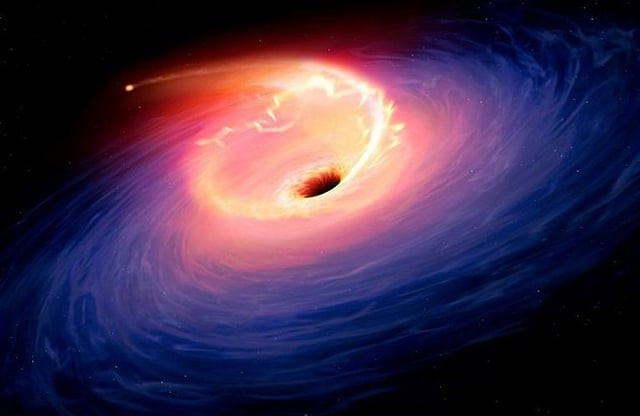Researchers discover high-speed jet closest to black hole
Relativistic jets are streams of matter emitted at speeds close to that of light

Using China's Hard X-ray Modulation Telescope, dubbed Insight-HXMT, researchers have discovered that the low-frequency quasi-periodic oscillations (LFQPOs) above 200 keV in a new black hole originated from the precession of a closest relativistic jet to the black hole.
Researchers at the Institute of High Energy Physics under the Chinese Academy of Sciences cooperated with researchers from universities and institutes in China, Britain, and Germany and reported the discovery which was published in the journal Nature Astronomy.
Facebook accused of secretly watching Instagram users through cameras
Relativistic jets are streams of matter emitted at speeds close to that of light, while accretion is the accumulation of matter into a central object via gravitational attraction.
LFQPOs, discovered in the 1980s, are commonly found in black hole X-ray binaries and their origin is still under debate, said the research article.
The properties of LFQPOs at high energies above 30 keV are closely related to the nature of the accretion flow in the innermost regions, and thus are key to testing existing models. The HXMT is capable of detecting emissions above 30 keV, thus playing a crucial role in the process.
How to find your lost Android phone using Google
The discovery will help people understand the behaviors of LFQPOs at hundreds of kiloelectron volts, and study the relativistic effects of a jet only hundreds of kilometers from a black hole, said the article.
Launched in 2017, the Insight-HXMT is China's first Space X-ray astronomical satellite. It has wide energy coverage, large effective area in high energy band and high time resolution.
The HXMT can explore regions closer to the black hole's event horizon and neutron star surface.



















COMMENTS
Comments are moderated and generally will be posted if they are on-topic and not abusive.
For more information, please see our Comments FAQ